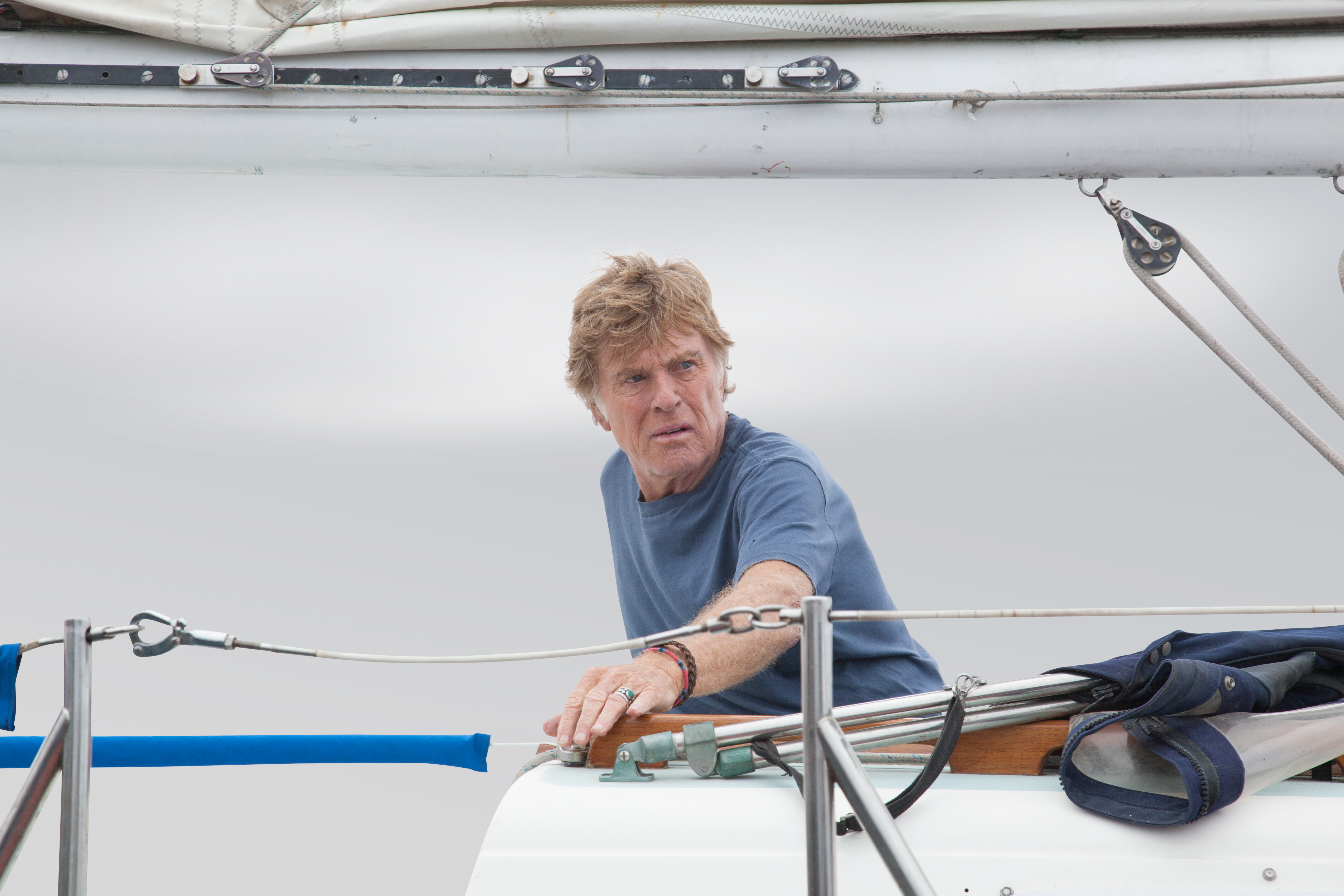All Is Lost
Opens Fri., Oct. 25 at Seven Gables and other theaters. Rated PG-13. 107 minutes.
Do you want Robert Redford to die? The same question can be asked about Tom Hanks and Sandra Bullock in this season’s unexpectedly fine trifecta of survival tales, but Redford’s case is special. One of our handsomest, golden-haired movie stars from the ’60s through the ’80s, the actor/director/Sundance Film Festival founder is an improbable 77 years old. To imagine his death is to contemplate the loss of a whole chapter in Hollywood history.
Playing an unnamed solo yachtsman shipwrecked in the Indian Ocean, he’s truly like The Old Man and the Sea—a taciturn, uncomplaining hero in the Hemingway mold. He represents an old-fashioned tradition of self-reliance and competence. Though writer/director J.C. Chandor withholds any personal information about our hero, he has the air of a semi-affluent retired entrepreneur. He wears a turquoise wedding ring and some beaded bracelets that suggest a West Coast liberal (which Redford is); and his 39-foot-sloop, the Virginia Jean, hails out of Portland—but Maine or Oregon we’ll never know. His short voiceover that begins the film—“I’m sorry . . . ”—implies a family, but he hardly mutters a word to himself. He’s living in his head even as the hull cracks open and the elements come raging through.
Chandor’s very accomplished debut, the 2011 Margin Call, addressed the global financial crisis, and All Is Lost is no less linked to world commerce. Our sailor is jarred from a nap by the edge of a floating shipping container full of shoes, somehow lost during its journey from China to the U.S. He wakes into an almost dreamlike scene: No wind, calm sea, and this ridiculous and likely fatal collision between uncaring capitalism and the puny individual. His radio and electronics are flooded, so he calmly and methodically goes about patching his boat while storm clouds gather in the distance. Like Gravity and Captain Phillips, this is fundamentally a process drama: Character is revealed through action, not words. It’s a Shackleton story without the crew to save.
With his weather-lined face and briny thatch of hair, Redford certainly looks the part of an experienced sailor. (You don’t get out to be in the middle of nowhere unless you know what you’re doing.) For non-sailors, there is a lot of line-pulling, fiberglass repair, water-distilling, and sail-trimming; this can be tedious to watch, but the film shows how survival is often a matter of enduring tedium and loneliness. And, as a sailor myself, I must praise Chandor’s relentless realism. The situation keeps getting worse for Redford, as it would, for entirely logical reasons. And against that tide of adversity, he keeps responding logically. (One nice little detail has him shaving before the storm—knowing he won’t get the chance again.) During this eight-day ordeal, it takes 70 wordless minutes to get to Redford’s “Fuuuuuck!” of frustration.
Chandor rarely but effectively pulls his camera up high—or pushes it below in the water, where sharks inevitably gather. Here is a small man adrift, stripped of technology, surviving by his wits. Here, too, is Redford without any Hollywood trappings—no chance to smile or charm. And it’s a great performance, possibly his best, a throwback to the silent movies his parents watched. All Is Lost pushes backward to the primitive: from GPS technology to sextant to drifting raft. It’s a simple story, but so in a way was that of Odysseus: epic, stoic, and specific.
bmiller@seattleweekly.com








